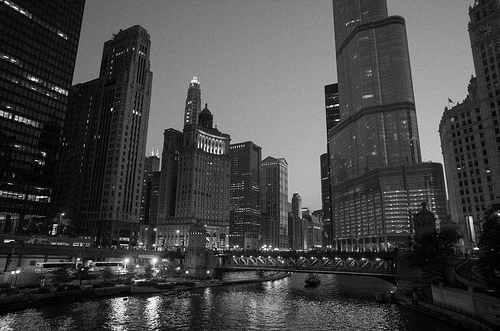Rick Kogan Essay: The beat generation
By Rick Kogan

Rick Kogan Essay: The beat generation
By Rick KoganIn a couple of minutes, you’ll hear about some bad cops—but first, the story of two beat cops.
There was, of course, the day that Jack was knocked to the pavement while chasing a man who had just robbed Walgreens. And one day, some years ago, Dom had to pull his gun while trying to catch a bank robber. But on most days the hardest thing Jack Haran and Dominic La Calamita had to do was explain the difference between the Water Tower and Water Tower Place.
They were cops. More specifically, they were beat cops; remnants of a more personal past, when police officers worked on foot.
The beat Jack and Dom patrolled was in the 18th District and roughly encompassed an area from Ohio Street south to the Michigan Avenue Bridge, from Rush Street East to Columbus Drive.

This area includes not only a subterranean stretch of Lower Michigan, but the glittering, tourist-packed street above, home to such disparate operations as embassies, banks, consulates, hotels, retail stores and the Chicago Tribune.
When they began walking this small slice of the city in the 1970s, beat cops had all but vanished during a 1960s push for modernization by those who believed that officers driving in squad cars were more effective fighting crime than cops walking.
Jack and Dom sort of slipped through the cracks, along with a few others, becoming almost instant relics—foot soldiers in a war being fought with cars. They kept on walking, though, directing traffic and tourists and chasing the occasional—the very occasional—bad guy.
To most of the people who knew them, they were simply Dom and Jack, and to stand with them on Michigan Avenue for more than a few minutes was to understand the intimacy that their combined 40 years on the beat created.
They are more than passing acquaintances with hundreds of people who work and live on the beat. They are privy to office gossip, know what time people arrive at and leave work. They will tell you about the panhandler who owns a condominium, about the successful female architect who became a down-and-outer and about cabbies not to be trusted.
“We may have a lot of people who we are friendly with down here,” says La Calamita. “But we are still police officers. We treat people the way we would like to be treated.”
They both retired some time ago and Jack died in 2008, Dom died over the weekend.
But I remember them well. As a stiff wind whipped across the avenue this morning, I could almost see them walking along the sidewalk. Somewhere else in the city, cops were shooting guns and kicking in doors; busting drug dealers and collaring gang-bangers; driving around in familiar blue-and-white cruisers…serving and protecting.
But I could hear Dom saying: “They don’t make TV show about guys like us. We just do what we do. There’s no glamour in that.”
But there was honor. There was honor.